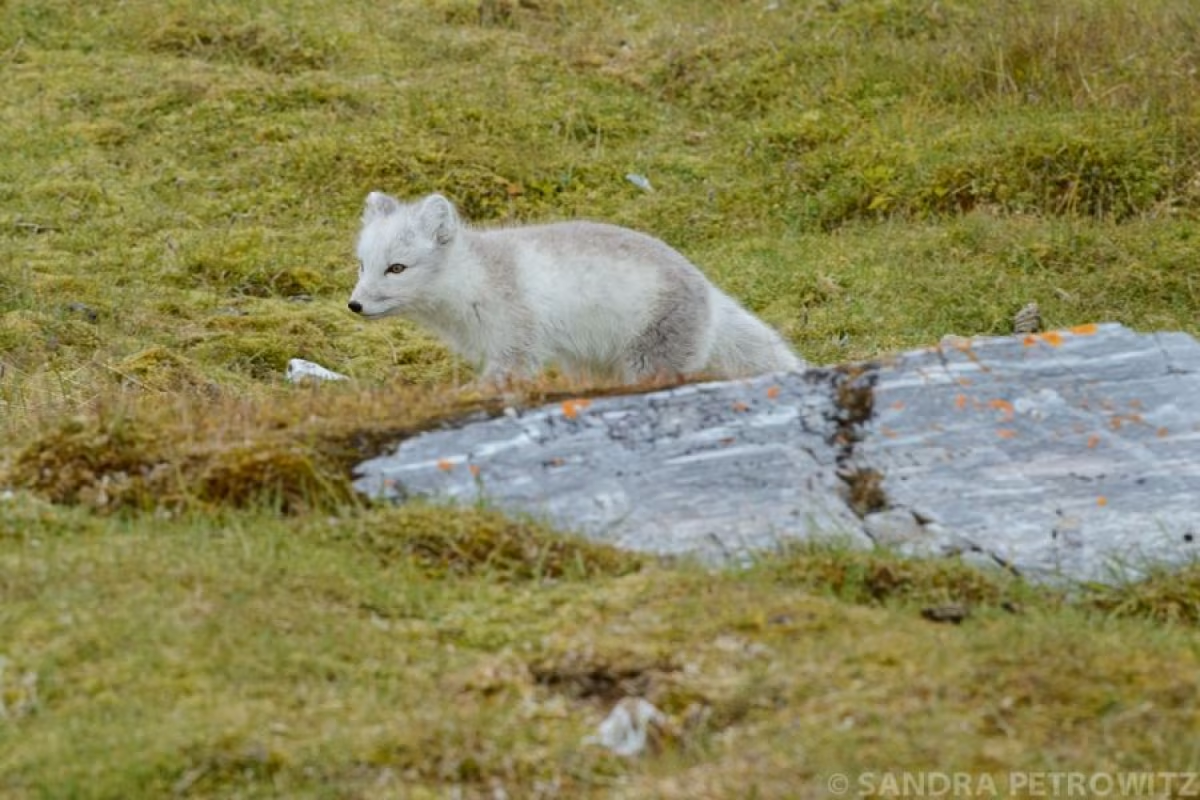Polar bears, pack ice, and more in Svalbard (north Spitsbergen)
We’ve mentioned before that the Arctic archipelago of Svalbard is one of the best places to spot polar bears. We’ve also mentioned that the area’s largest island, Spitsbergen, is excellent not only for seeing these magnificent Arctic animals but also for experiencing one of the region’s most distinctive phenomena: pack ice.
We have not yet, however, specifically discussed north Spitsbergen, which is hands-down the best place in the entire island chain to view both pack ice and polar bears.
Here we’ll rectify this shocking and scandalous oversight, detailing the Svalbard trip that seeks bears and ice most thoroughly - a voyage appropriately named “North Spitsbergen, in Search of Polar Bears and Pack Ice.”

A brief day-by-day glance at our North Spitsbergen quest for polar bears and pack ice
This thrilling voyage, while not forgetting all the other exotic animals and landscapes to be enjoyed in the Arctic, is focused primarily on the two most iconic aspects of that region.

Like our other Svalbard cruises, this one begins in the administrative center of Longyearbyen, where you’re free to take in the local sights before your voyage begins. But by early evening, you’ll already be sailing out of Isfjorden, where we recommend keeping a sharp lookout for minke whales.

The following day you’ll arrive in your first north Spitsbergen fjord: Raudfjorden, a beautifully expansive area teeming with glaciers. There’s a fair chance you’ll see ringed and bearded seals in this fjord, whose cliffs and shoreline support thriving seabird colonies, rich vegetation, and polar bears.

The next fjord you’ll visit, on day three, is Liefdefjorden. And if weather permits, you’ll also see the enormous face of the Monaco Glacier, measuring 5 km (3.1 miles) long. Thousands of kittiwakes love the water in this area, and the base of the glacier is a popular polar bear hunting ground.

If weather or pack ice conditions prevent sailing here early in the season, however, we’ll pick an alternate route along the west coast of Spitsbergen.
On day four you enter Hinlopen Strait, where you might see bearded seals, ringed seals, polar bears, and occasionally blue whales. We like to take the Zodiacs out in this area, cruising through the ice floes of Lomfjordshalvøya, then viewing the famed bird cliffs of Alkefjellet and their thousands of Brünnich’s guillemots.

We might also attempt a same-day landing on Nordaustlandet, the second-largest island in Svalbard. Here you could possibly see reindeer, pink-footed geese, and walruses. But if pack ice prevents our sailing into Hinlopen, we have other great routes in mind.
Next comes the Seven Islands, our plan for day five. This is where we hit the northernmost point of our voyage at 80° north, just 870 km (540 miles) from the geographic North Pole. Polar bears are sometimes spotted in this region, so we like to park the ship for several hours among the pack ice before we turn around west again.

The sixth day of the expedition we spend retracing our route west as we keep watch for polar bears and elusive Greenland (bowhead) whales. At about 40 nautical miles west of Spitsbergen, we’ll be sailing the edge of the continental shelf.

This is where fin whales forage during the summer in the upwelling zones, areas where cold, nutrient-rich water wells up from below the sea’s surface. When we reach the mouth of Kongsfjorden, you’ll have a decent chance of seeing more minke whales.
On day seven we’ll explore the walruses haul-out shores of Forlandsundet. Alternately, we may visit St. Jonsfjorden or the mouth of Isfjorden, where you can make a landing at Alkhornet. Seabirds nest on the cliffs near Alkhornet, and Arctic foxes often search below for fallen eggs and chicks. You might also see reindeer grazing on the sparse vegetation here.

We reach Longyearbyen later that night, then disembark the following day.
While the odds are good you’ll see polar bears on this voyage, obviously we cannot make any guarantees. The polar bear is not a fantastically abundant species, and even the most astute crew cannot know in advance where one will appear and when.

Nonetheless, this voyage gives you some of your best chances. And even if you’re not lucky enough to spot a polar bear your first time around, the awe-inspiring ice formations and one-of-a-kind wildlife of north Spitsbergen make this expedition more than worthwhile.






